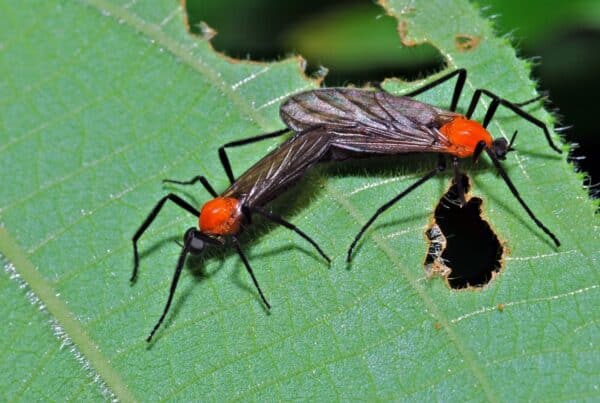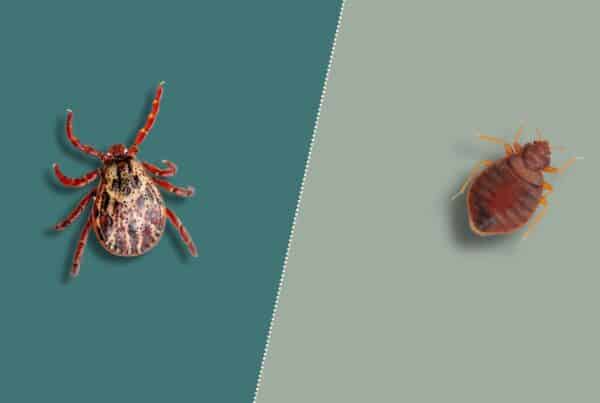The Jerusalem cricket is an intriguing insect that captures the imagination of gardeners, naturalists, and even those who aren’t typically fans of bugs. Also known as the potato bug, this docile critter has a distinctive appearance unlike any other bug.
In this article, we will uncover key facts about the biology and behavior of the Jerusalem cricket, including what makes it stand out from other insects. We’ll also bust some common myths and provide tips on managing their presence in your garden humanely and safely. Whether you want to satiate your curiosity about this unique bug or need actionable advice on addressing its presence, you’ll find everything you need to know about the misunderstood Jerusalem cricket right here.
What is a Jerusalem Cricket?
The Jerusalem cricket goes by several common names, but this quirky insect’s scientific name is Stenopelmatus fuscus, in the family Stenopelmatidae.
At first glance, the Jerusalem cricket hardly resembles a cricket at all. It has a rounded, plump body that can grow over 2 inches long. Its head is strikingly wide and elongates into a pointed snout. But the most distinctive features are the Jerusalem cricket’s strong, spiny legs and almost armor-like exoskeleton. This tough exterior earns it the nickname “old man of the woods.”
Unlike true crickets, Jerusalem crickets do not have wings or the ability to chirp. Their front legs are disproportionately large compared to the other pairs. They use these muscular front legs to dig and burrow in soil, hence monikers like “potato bugs”. The Jerusalem cricket’s powerful mandibles can deliver a nip, but they are not venomous or harmful to humans.

Habitat and Behavior
Jerusalem crickets thrive in damp, cool environments and are found throughout the western United States, Mexico, and parts of Central America. They prefer moist soil and leaf litter, often near streams or woodlands, where they can dig extensive burrows and tunnels.
These nocturnal insects spend the hottest daylight hours resting underground. At night they emerge to feed and mate. Jerusalem crickets are omnivorous scavengers, consuming decaying plant material, fungi, dead insects, and other organic debris they encounter while foraging.
One of the Jerusalem cricket’s more unusual behaviors involves drumming its abdomen to produce vibrations. Scientists believe this rhythmic pulsing enables the wingless insects to locate potential mates. The vibrations also serve as warnings if the cricket is disturbed.
Jerusalem crickets go through incomplete metamorphosis from egg to nymph to adult. The females lay clusters of small eggs in underground chambers. The nymphs resemble tiny adults and molt several times over 2-5 years before reaching full maturity. Adults live for another 1-2 years.
While the Jerusalem cricket’s alien appearance may be startling, its secretive lifestyle and feeding behaviors actually provide valuable ecological services that support a balanced environment.
The Role of Jerusalem Crickets in the Ecosystem
Though the Jerusalem cricket’s formidable looks may suggest otherwise, this unique insect contributes positively to its native ecosystems. As it tunnels and forages, the cricket helps aerate and enrich the soil–critical tasks that promote plant growth. The burrows also assist with drainage and water penetration.
Additionally, Jerusalem crickets aid in the decomposition process as they feed on decaying organic matter. This facilitates important nutrient recycling that benefits both flora and fauna.
The Jerusalem cricket itself also serves as an important food source. Small mammals like shrews and rodents prey on these insects, as do lizards, frogs, owls, and other birds. Even tarantulas and scorpions may feed on Jerusalem crickets if given the opportunity.
So while the Jerusalem cricket may alarm some, it plays an integral role in balancing the web of life. Its distinctive adaptations help perpetuate thriving ecosystems and food chains.
Identifying a Jerusalem Cricket
Jerusalem crickets have several distinctive features that set them apart from other backyard insects and make them relatively easy to identify.
Size and Proportion: Adults range from 1-2.5 inches long. They have a rounded, almost oval-shaped body and a wide, square-shaped head that narrows into a pointed snout. Their large, spiny front legs give them a hunched appearance.
Color: Coloration can vary but generally consists of mottled brown, yellow, or reddish hues. Some are more camouflaged while others have brighter, contrasting bands of color. Nymphs tend to be darker.
Exoskeleton: A defining characteristic is the Jerusalem cricket’s thick, armored exoskeleton. It has a rough, textured feel and segments may overlap.
Legs: They have six legs but the front pair are markedly bigger and stronger than the other two pairs. The hind legs aid movement when hopping or jumping.
Markings: Look for the blackish triangle patterns along the body segments and distinctive banding on the legs. Their antennae are short and thick.

Managing Jerusalem Crickets in Your Garden
While Jerusalem crickets play an important ecological role, you may want to limit their presence in your home garden or yard. To do this, start by keeping the garden tidy – removing piles of leaves, boards, stones, and other debris these insects might use for cover.
Eliminate excess moisture by improving drainage and reducing mulch near the house. Introduce predators like birds, lizards, and beneficial insects that feed on Jerusalem crickets. Diatomaceous earth sprinkled around the perimeter can help dry them out. Ensure outdoor lights are not attracting excessive prey.
Long-term prevention involves nurturing healthy soil and plant life so your garden ecosystem stays balanced. Address significant infestations by contacting a professional who practices integrated pest management tailored to Jerusalem crickets. With observation and gentle nudging, your garden can reach an equilibrium where Jerusalem crickets remain out of sight.
When to Call a Professional
In most cases, Jerusalem crickets can be managed without professional help using preventive measures, natural deterrents, and tolerance. However, contacting a pest control company may be advisable if the crickets are heavily infesting areas around doors and windows, damaging plants, or causing disruptive nighttime activity in the home.
Signs of a severe Jerusalem cricket problem include large numbers congregating around lights or hiding under vegetation. Their tunneled burrows may be damaging structural foundations. Pesticide sprays available to the public have limited effectiveness on these hardy insects.
Pest control experts can apply targeted baits or insecticides and recommend physical or mechanical controls specific to Jerusalem crickets. They also have access to stronger chemicals if needed for heavy infestations. While Jerusalem crickets are harmless, calling a professional can provide peace of mind and a customized solution for eliminating them from your living areas.
Wrapping Up
As we’ve discussed, Jerusalem cricket is more than just a creepy-crawly invader in your garden. This unique insect is a critical component of local ecosystems across the Americas. While the Jerusalem cricket’s alien appearance sends shivers down some spines, its habitat and behaviors offer invaluable services.
Now that you know how to identify the Jerusalem cricket, understand its importance in nature, and can apply humane solutions for managing populations, you can comfortably coexist with this docile creature. So next time you uncover a Jerusalem cricket, appreciate both its weird beauty and the vital role it plays in the web of life.
For help identifying a pest or to schedule routine prevention, reach out to Inside & Out Pest Services in Jacksonville, FL, and surrounding areas.



